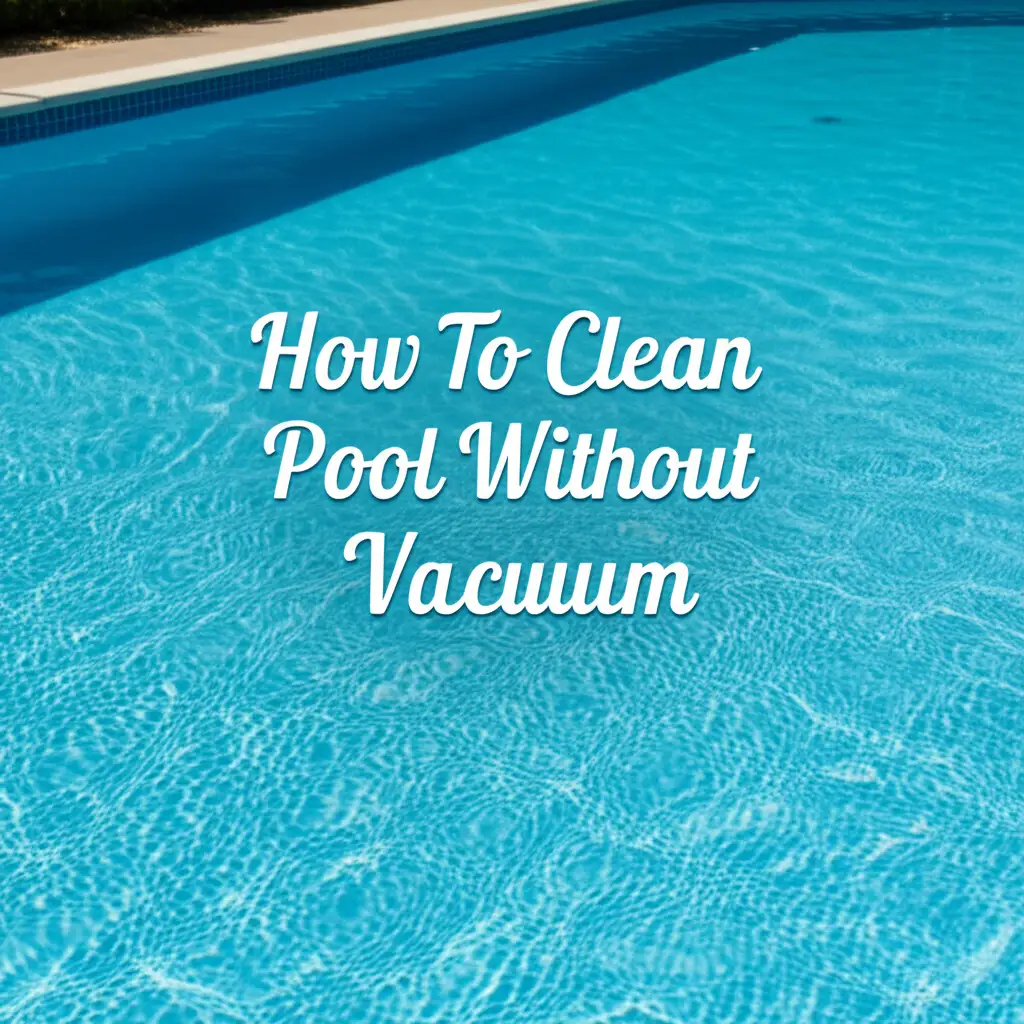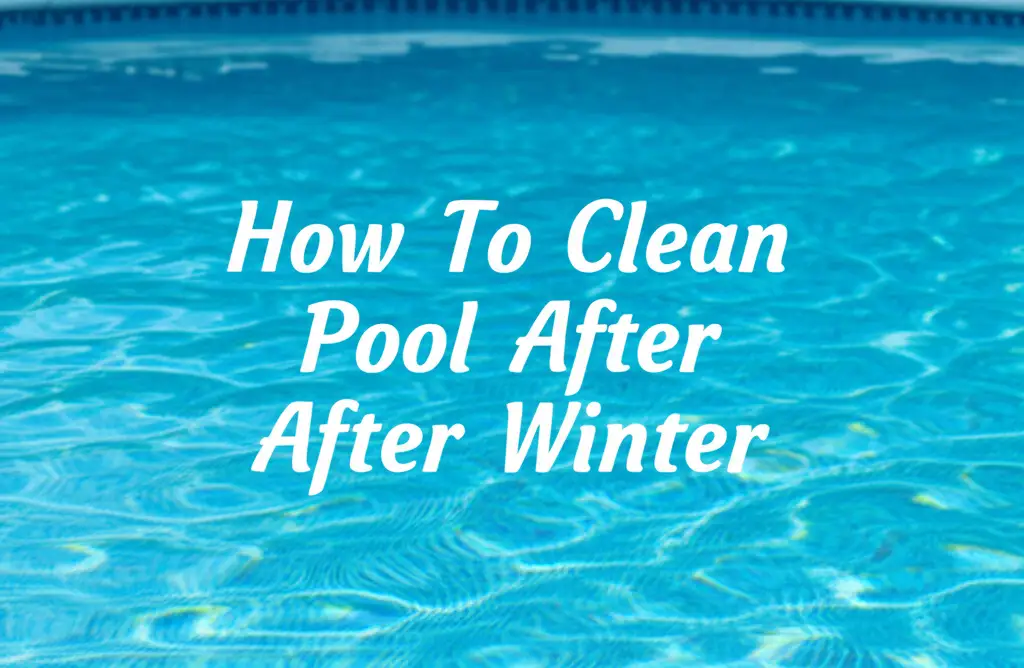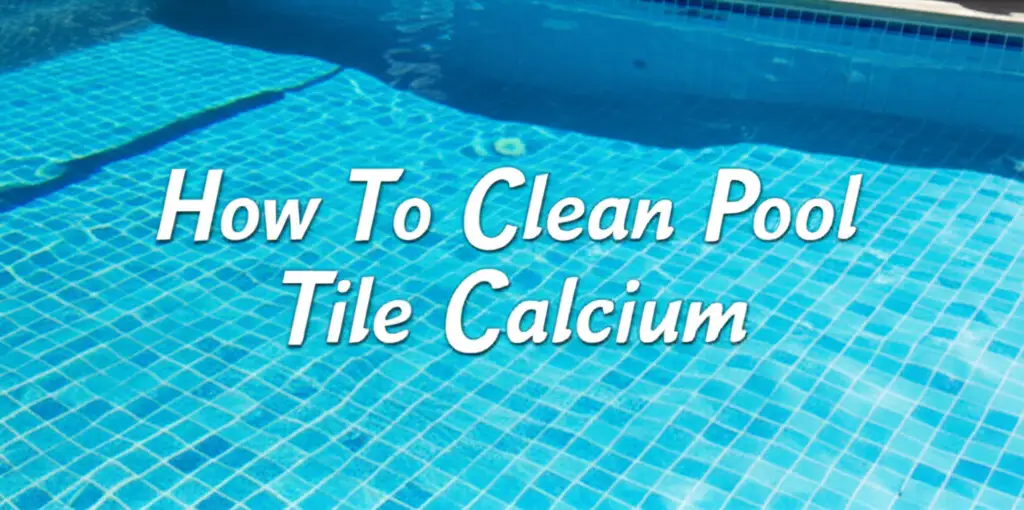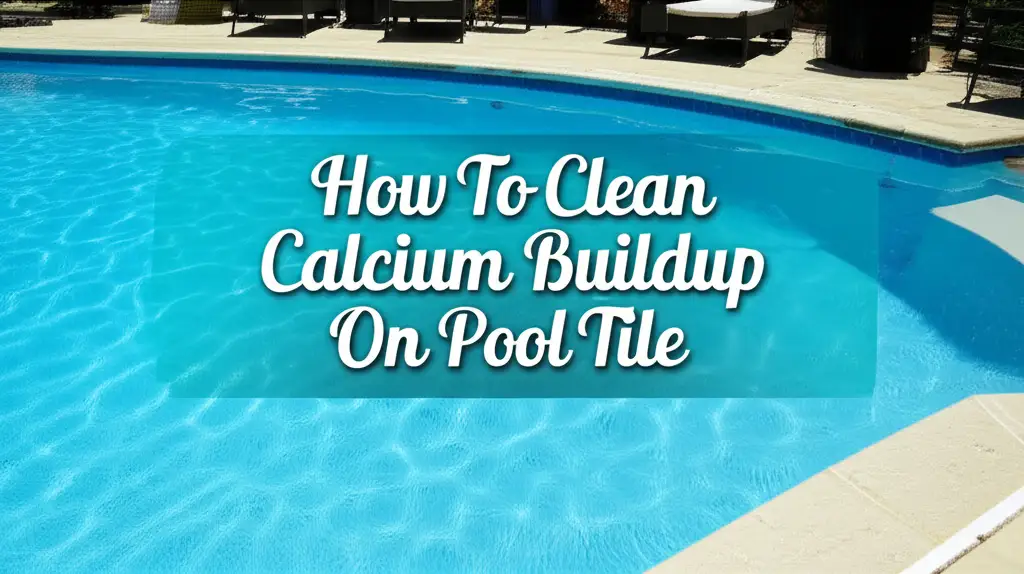· Pool Maintenance · 16 min read
How To Clean Pool Tile With Vinegar
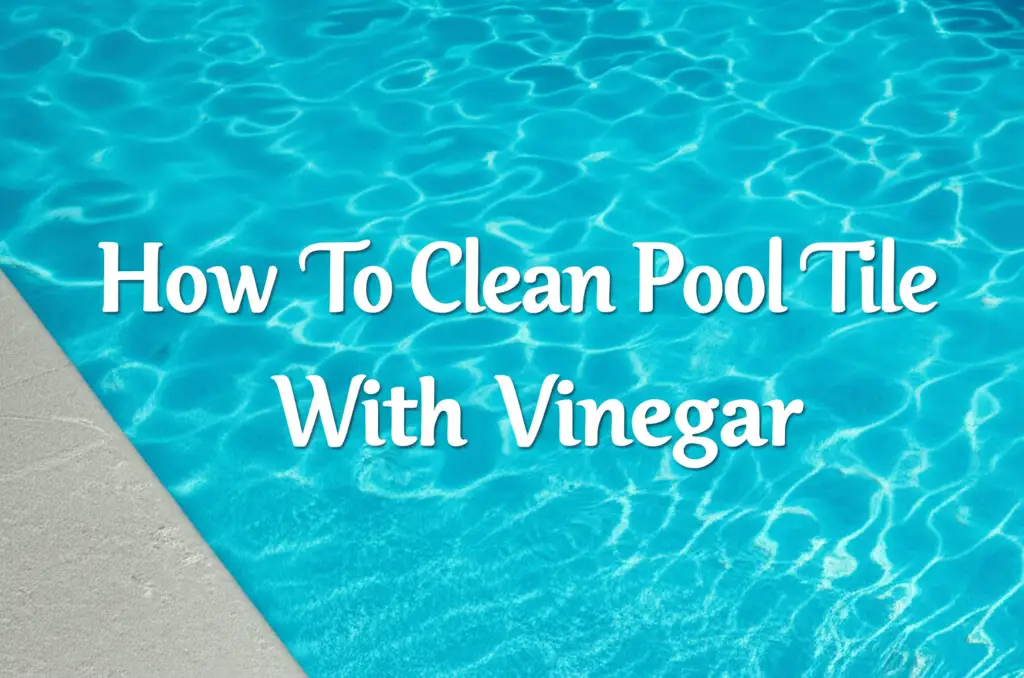
Unlock Sparkling Pool Tiles: Your Guide to Cleaning with Vinegar
Are you tired of dull, grimy pool tiles? Do unsightly mineral deposits or stubborn algae stains spoil your pool’s inviting look? Many pool owners face this common challenge. Harsh chemical cleaners seem like the only solution. However, a simple, natural, and affordable option exists in your pantry. I discovered this myself when looking for a safer way to maintain my pool’s beauty.
This guide reveals how to clean pool tile with vinegar. We will explore the benefits of using vinegar, detail the tools you need, and provide a clear, step-by-step cleaning process. You will learn how to tackle tough stains and maintain long-lasting sparkle. We also cover crucial safety tips. Prepare to transform your pool tiles with this eco-friendly method.
Takeaway:
- Vinegar offers an effective, natural way to remove calcium, hard water stains, and grime from pool tiles.
- Proper preparation and safety measures are vital before you begin cleaning.
- Diluted vinegar, a good scrub brush, and patience yield excellent results.
- Regular maintenance helps prevent future buildup and keeps your pool tiles pristine.
What is the most effective way to clean pool tile with vinegar?
The most effective way to clean pool tile with vinegar involves a simple process. First, dilute white vinegar with water. Spray this solution onto the affected tiles. Allow it to soak for 15-30 minutes, letting the acid break down mineral deposits and grime. Then, scrub vigorously with a stiff brush. Finally, rinse the tiles thoroughly with clean water.
The Power of Vinegar: Why It’s Great for Pool Tiles
Vinegar is a surprisingly powerful cleaning agent. It offers many benefits for pool tile cleaning. This natural acid, specifically acetic acid, effectively dissolves common pool tile issues. Many homeowners prefer it over harsh chemical options. I always reach for it first before considering anything stronger.
Vinegar provides a natural cleaning solution. It is non-toxic and biodegradable. This means it is safer for your family, pets, and the environment. Using vinegar reduces the amount of harsh chemicals entering your pool water. This also helps maintain balanced pool chemistry. It offers an eco-friendly choice for pool maintenance.
Hard water stains and calcium buildup are frequent problems on pool tiles. These mineral deposits form a white, crusty layer. Vinegar’s acidic nature breaks down these alkaline deposits. It works by reacting with the minerals, making them easier to scrub away. This action restores the original luster of your tiles. You will see a noticeable difference.
Vinegar is also cost-effective. A large bottle of white vinegar costs very little. It saves you money compared to specialized pool tile cleaners. Its versatility means you can use it for many other household cleaning tasks too. For more ideas on how to use vinegar in your cleaning routine, learn how to clean with vinegar and baking soda.
This common household item also helps with mild algae and grime. While not a strong algaecide, its acidity can disrupt algae growth. It loosens dirt and grime clinging to tile surfaces and grout lines. This makes the physical scrubbing more effective. Vinegar is a gentle yet effective option for regular tile upkeep.
Essential Tools and Materials for Vinegar Cleaning
Cleaning pool tiles with vinegar requires specific tools. Gathering everything beforehand makes the process smooth. You will work more efficiently with the right equipment. I always lay out my supplies before starting any cleaning project. This prevents interruptions and saves time.
First, you need white distilled vinegar. This is the star of our cleaning solution. White vinegar has a consistent acidity level. Avoid apple cider vinegar or other types. Their color and additional components might stain or leave residue. Purchase a large bottle, as you will use a fair amount.
Next, get a sturdy spray bottle. This allows for easy application of the vinegar solution. A spray bottle ensures even distribution across the tile surface. It also helps you target specific stained areas. Choose one with a durable nozzle for repeated use.
A good scrub brush is vital. Look for a brush with stiff bristles. Nylon bristles work well for most pool tiles. Avoid metal brushes, as they can scratch delicate surfaces. A brush with a handle offers better grip and leverage. For grout lines, a smaller, pointed brush, like a grout brush, is very helpful.
You will also need a bucket. This holds your diluted vinegar solution. It also serves for rinsing your tools. A separate bucket for clean water is useful for rinsing tiles. I find two buckets make the job much cleaner.
Protective gear is important. Wear rubber gloves to protect your hands from the vinegar. While mild, prolonged contact can irritate skin. Safety glasses or goggles are also wise. They protect your eyes from splashes, especially when scrubbing vigorously. Protect your skin from sun exposure while working outside.
Finally, have some clean towels or old rags ready. These are for wiping down surfaces and drying tiles. They help remove loosened debris and excess moisture. Keep them separate from your general household cleaning rags. Using the right tools ensures a successful and safe cleaning experience.
Preparing Your Pool Area for Vinegar Tile Cleaning
Proper preparation sets the stage for effective tile cleaning. It ensures safety and maximizes vinegar’s cleaning power. Rushing this step can lead to incomplete results or issues. I always dedicate time to preparing the area. This makes the actual cleaning much easier.
First, assess your pool’s water level. For tiles above the waterline, no draining is necessary. If cleaning submerged tiles, you may need to partially drain your pool. Lower the water level enough to expose the tiles you want to clean. This allows direct application of the vinegar solution. Be sure to check your pool type and manufacturer’s recommendations before draining. For tips on cleaning parts of your pool without draining, see our guide on how to clean bottom of pool without draining.
Next, protect nearby plants and landscaping. Vinegar is an acid. It can harm delicate foliage if it splashes onto them. Cover plants with plastic sheeting or tarps. You can also thoroughly water the surrounding soil. This dilutes any stray vinegar that might land there.
Always test the vinegar solution in an inconspicuous area first. Pool tiles come in various materials. Most ceramic and porcelain tiles tolerate vinegar well. However, some natural stone tiles, like travertine or limestone, are sensitive to acids. Vinegar can etch or dull these surfaces. Apply a small amount, wait a few minutes, then rinse. Check for any discoloration or damage. If you have natural stone tiles, refer to specialized cleaning methods. Our article on how to clean natural stone tile and grout offers more specific guidance.
Ensure good ventilation. While vinegar fumes are not as harsh as bleach, they can be strong. Work on a breezy day if possible. Avoid inhaling large amounts of the vapor. This ensures a comfortable working environment. Proper preparation safeguards your pool, your landscaping, and yourself.
Step-by-Step Guide to Cleaning Pool Tile with Vinegar
Cleaning pool tiles with vinegar is a straightforward process. Following these steps ensures thorough and effective results. This method targets common issues like mineral buildup and grime. I use this precise approach every time I clean my pool tiles.
Begin by preparing your vinegar solution. For general cleaning and light mineral deposits, mix equal parts white distilled vinegar and water. Use a 1:1 ratio. For heavier calcium buildup or stubborn stains, you can use undiluted vinegar. Pour the solution into a sturdy spray bottle. Label the bottle clearly if you mix a stronger solution.
Spray the vinegar solution generously onto the dirty pool tiles. Ensure complete coverage of the affected areas. Pay special attention to visible calcium lines, hard water spots, and any grime. Let the solution sit on the tiles. This dwell time allows the acid to break down the deposits. For light stains, 10-15 minutes might suffice. For heavy calcium, allow 30 minutes to an hour. You might even need a longer soak for severe buildup.
After the soaking period, begin scrubbing. Use your stiff-bristled scrub brush. Apply firm pressure and scrub in small circular motions. Focus on areas with visible buildup. You should see the deposits starting to loosen and lift away. For particularly stubborn spots, you may need to reapply vinegar and scrub again. Don’t be afraid to put some elbow grease into it. This physical agitation is key to removing softened stains. If tackling significant calcium deposits, check out our detailed guide on how to clean calcium buildup on pool tile.
Once you have scrubbed an area, rinse it thoroughly. Use a bucket of clean water or a garden hose. Rinse off all vinegar residue and loosened debris. Do not let the vinegar dry on the tiles, especially undiluted vinegar. This prevents potential streaking or residue. Rinse until the tiles look clean and feel smooth. Move to the next section of tiles and repeat the process. Work in small sections to keep the vinegar from drying out. This systematic approach guarantees sparkling results.
Tackling Stubborn Stains and Grout Lines
Sometimes, regular vinegar application needs a boost. Stubborn stains, heavy mineral deposits, or entrenched grout grime require a more intensive approach. Do not despair; vinegar can still play a role. I have faced these challenges myself and found specific techniques that work.
For truly tenacious calcium buildup, a thicker paste can be more effective. Combine white distilled vinegar with baking soda. Mix these ingredients slowly until you form a thick paste. Baking soda adds abrasive power. Apply this paste directly onto the stubborn stains. Let it sit for a longer period, perhaps 1 to 2 hours, or even overnight if the area is dry. The paste adheres better than liquid, providing extended contact time. When ready, scrub vigorously with a stiff brush. This combination is a powerful duo. For more uses of this pair, read about how to clean with vinegar and baking soda.
Grout lines are notorious for collecting dirt and algae. These narrow channels can be hard to clean. A specialized grout brush with stiff, narrow bristles works best here. Dip the brush directly into undiluted vinegar or your vinegar-baking soda paste. Scrub along the grout lines with firm, back-and-forth motions. The acidity of the vinegar penetrates the porous grout. It helps loosen embedded grime and mildew. Regular scrubbing keeps grout looking fresh.
For algae stains that are more than just a light film, vinegar might need help. While vinegar is acidic and can deter mild algae, it is not a strong algaecide. For significant algae issues, especially black algae, you might need stronger measures. However, vinegar can still be part of the pre-treatment. Spray undiluted vinegar, let it sit, then scrub. This softens the algae before further treatment. For comprehensive algae removal, especially from the entire pool, consider our guide on how to clean above ground pool with algae.
Always remember to rinse thoroughly after scrubbing. Any leftover paste or loosened debris should be washed away. This ensures a clean finish and prevents any residue from settling back. Repeat the application and scrubbing process if necessary. Patience and persistence are key to tackling these tougher challenges.
Maintaining Pool Tile Cleanliness After Vinegar Treatment
Cleaning your pool tiles is a great achievement. However, maintenance is crucial to keep them sparkling. Prevention is always easier than cure. Regular upkeep prolongs the cleanliness achieved with vinegar. I always incorporate these habits into my routine. This prevents hard work from going to waste.
First, establish a regular light cleaning schedule. Do not wait for heavy buildup to appear. A quick wipe-down or light scrub with diluted vinegar once a month can prevent severe stains. This includes tiles above and just below the waterline. This routine keeps grime and early mineral deposits from settling in. Think of it as preventative maintenance for your tiles.
Proper pool water chemistry plays a significant role in tile cleanliness. Imbalanced pH and high calcium hardness levels contribute to scale buildup. Regularly test your pool water. Maintain pH levels between 7.4 and 7.6. Keep calcium hardness between 200 and 400 parts per million. These balanced levels minimize mineral precipitation on tile surfaces. Adjusting your pool chemicals correctly reduces the causes of future stains.
Use a sequestering agent if you have hard water in your area. These products bind with minerals like calcium and magnesium. They prevent these minerals from forming scale on pool surfaces. Add a sequestering agent according to product instructions. This proactive step can significantly reduce the frequency of heavy tile cleaning. It is an investment in preventing future problems.
Ensure your pool filtration system works efficiently. A well-maintained filter removes suspended particles from the water. This includes dirt, debris, and microscopic organisms. Cleaner water means fewer contaminants that can stick to your tiles. Regularly backwash or clean your pool filter. For instance, knowing how to clean sand filter for above ground pool is essential. A clean filter contributes to overall pool hygiene.
Lastly, address any splash-out zones. Areas where water frequently splashes and dries are prone to buildup. Consider installing covers or splash guards if feasible. After heavy use, a quick rinse of the tiles can prevent minerals from drying onto the surface. Consistent vigilance keeps your pool tiles in pristine condition for longer.
Safety Precautions and Important Considerations
While vinegar is a natural cleaner, safety is still paramount. Knowing when and how to use it safely prevents issues. Ignoring precautions can lead to discomfort or damage. I prioritize safety in all my cleaning tasks. This ensures a positive and problem-free experience.
Always wear appropriate personal protective equipment (PPE). Rubber gloves protect your hands from prolonged exposure to vinegar. Although vinegar is mild, it can cause skin irritation over time. Safety glasses or goggles are also vital. They shield your eyes from splashes, especially when scrubbing vigorously. Protect your skin from sun exposure during outdoor work.
Ensure good ventilation when cleaning, especially in enclosed areas. Outdoor pools usually have natural air circulation. However, indoor pools or smaller, confined spaces require opening windows or using fans. Vinegar fumes can be strong. Inhaling large amounts might cause respiratory irritation. Work on a breezy day if possible.
Never mix vinegar with chlorine bleach. This combination creates highly toxic chlorine gas. Chlorine gas is extremely dangerous. It can cause severe respiratory problems, eye irritation, and even death. Always keep vinegar and bleach separate. Use one or the other, never both, on the same surface. Rinse surfaces thoroughly between using different cleaners.
Understand that vinegar has limitations. It works well for light to moderate calcium buildup and general grime. For extremely heavy, long-standing scale, or certain types of algae, vinegar might not be strong enough. In such cases, professional help or stronger chemicals, like muriatic acid, might be needed. Our guide on how to clean pool tile with muriatic acid offers information on that more potent solution. Always exhaust natural options first.
Be aware of vinegar’s effect on pool water chemistry. While cleaning tiles above the waterline, minimal vinegar enters the pool. If cleaning submerged tiles or using large quantities, vinegar can slightly lower the pool’s pH. This makes the water more acidic. Test your pool water chemistry after cleaning. Adjust pH levels as needed with appropriate pool chemicals. Always check your pool water balance the day after a major cleaning session.
Frequently Asked Questions About Cleaning Pool Tile with Vinegar
Is vinegar safe for all types of pool tiles?
Vinegar is generally safe for ceramic and porcelain pool tiles. However, exercise caution with natural stone tiles like limestone or marble. Vinegar’s acidity can etch or dull these surfaces over time. Always perform a patch test in an inconspicuous area first. This checks for any adverse reactions before widespread application.
How often should I clean my pool tiles with vinegar?
The frequency depends on your pool’s usage and hard water conditions. For light maintenance, cleaning every month or two can prevent buildup. If you notice significant mineral deposits or grime, clean them as needed. Regular, light cleaning reduces the need for intensive scrubbing.
Can vinegar affect pool water chemistry?
Small amounts of vinegar entering the pool usually have minimal impact. However, if you use large quantities or clean submerged tiles extensively, vinegar can slightly lower the pool’s pH level. This makes the water more acidic. Always test your pool water chemistry after cleaning. Adjust the pH as necessary using proper pool chemicals.
What kind of vinegar should I use for pool tiles?
Always use white distilled vinegar. This type has a consistent acidity and is clear. Other vinegars, like apple cider vinegar, contain sugars or pigments. These can potentially stain your tiles or leave unwanted residue. White distilled vinegar provides the best and safest results for pool tile cleaning.
Will vinegar remove black algae from pool tiles?
Vinegar’s acidity can deter mild algae growth. However, it is not an effective algaecide for stubborn black algae. Black algae requires stronger, specialized pool algaecides and rigorous brushing. Vinegar can help loosen the surface grime. Always follow up with appropriate treatment for severe algae infestations.
Can I mix vinegar with other cleaning agents for better results?
Never mix vinegar with chlorine bleach. This combination creates dangerous chlorine gas. This gas is highly toxic. Only use one cleaner at a time. If you want a more abrasive clean, mix vinegar with baking soda to form a paste. This combination is safe and effective for tougher stains.
Conclusion
A sparkling pool enhances any backyard oasis. Knowing how to clean pool tile with vinegar offers a practical, eco-friendly solution for maintaining that sparkle. We explored the many benefits of this common household item. Vinegar effectively tackles common pool tile woes. It breaks down calcium, removes hard water stains, and lifts general grime. You now have the knowledge and steps to achieve impressive results.
We discussed gathering the right tools, from white vinegar to a stiff scrub brush. Proper preparation, including testing inconspicuous areas and protecting nearby plants, ensures a smooth process. Our step-by-step guide detailed dilution, application, and scrubbing techniques. You learned how to tackle stubborn stains and grout lines with methods like a vinegar and baking soda paste. Maintaining cleanliness with regular upkeep and balanced water chemistry is key. Always remember essential safety precautions. Never mix vinegar with bleach.
You possess the power to transform your pool tiles. Embrace this natural cleaning method. Enjoy the satisfaction of a shimmering, clean pool that invites relaxation. Give it a try. Your pool tiles, and the environment, will thank you.
- pool cleaning
- vinegar cleaner
- calcium removal
- tile cleaning
- eco-friendly cleaning

